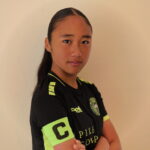FIFA starts bidding process for 2023 Women’s World Cup

(Via FIFA) – As fans eagerly await the start of the upcoming FIFA Women’s World Cup™, which is due to kick off in Paris in June 2019, FIFA informed all its member associations today about the start of the bidding process for the FIFA Women’s World Cup 2023.
Member associations will have until 15 March 2019 to submit a completed expression of interest form to FIFA. Nearly a year later, in March 2020, FIFA’s Council is expected to appoint the host(s) of the FIFA Women’s World Cup.
The key dates of the bidding process are:
- 15 March 2019: Deadline to submit the completed expression of interest form to FIFA
- 18 March 2019: FIFA to dispatch the bidding registration and overview documents
- 16 April 2019: Deadline to submit the completed bidding registration to FIFA
- 18 April 2019: FIFA to dispatch hosting documents to the member associations that have returned the bidding registration by the above deadline
- 4 October 2019: Submission of the bid book, the signed hosting agreement and all other hosting documents to FIFA
- March 2020: Expected appointment date of the host(s) by the FIFA Council
“Interest in women’s football continues to grow and following this summer’s FIFA Women’s World Cup in France, it is certain to reach an all-time high. FIFA believes that women’s football still has even more potential for growth and we look forward to receiving hosting submissions for the FIFA Women’s World Cup 2023, to see how potential host countries will aim to promote the ultimate competition in women’s football, and create a sustainable legacy that will inspire upcoming generations of young girls and women to get involved in the game,” said FIFA Chief Women’s Football Officer Sarai Bareman.
In line with FIFA’s first ever women’s football strategy, FIFA endeavours to organise a FIFA Women’s World Cup™ that exploits its full potential while at the same time balancing social, environmental and economic considerations related to the competition.
Since 1991, the FIFA Women’s World Cup has been played every four years. Throughout the past decades, the level of play has dramatically improved, media attention has increased exponentially, and the game has grown in popularity as confirmed by the fact that more than 750 million television viewers watched the 2015 edition of FIFA’s flagship women’s competition.
The tournament plays a key strategic role as part of FIFA’s efforts to double the number of female players to 60 million by 2026.











